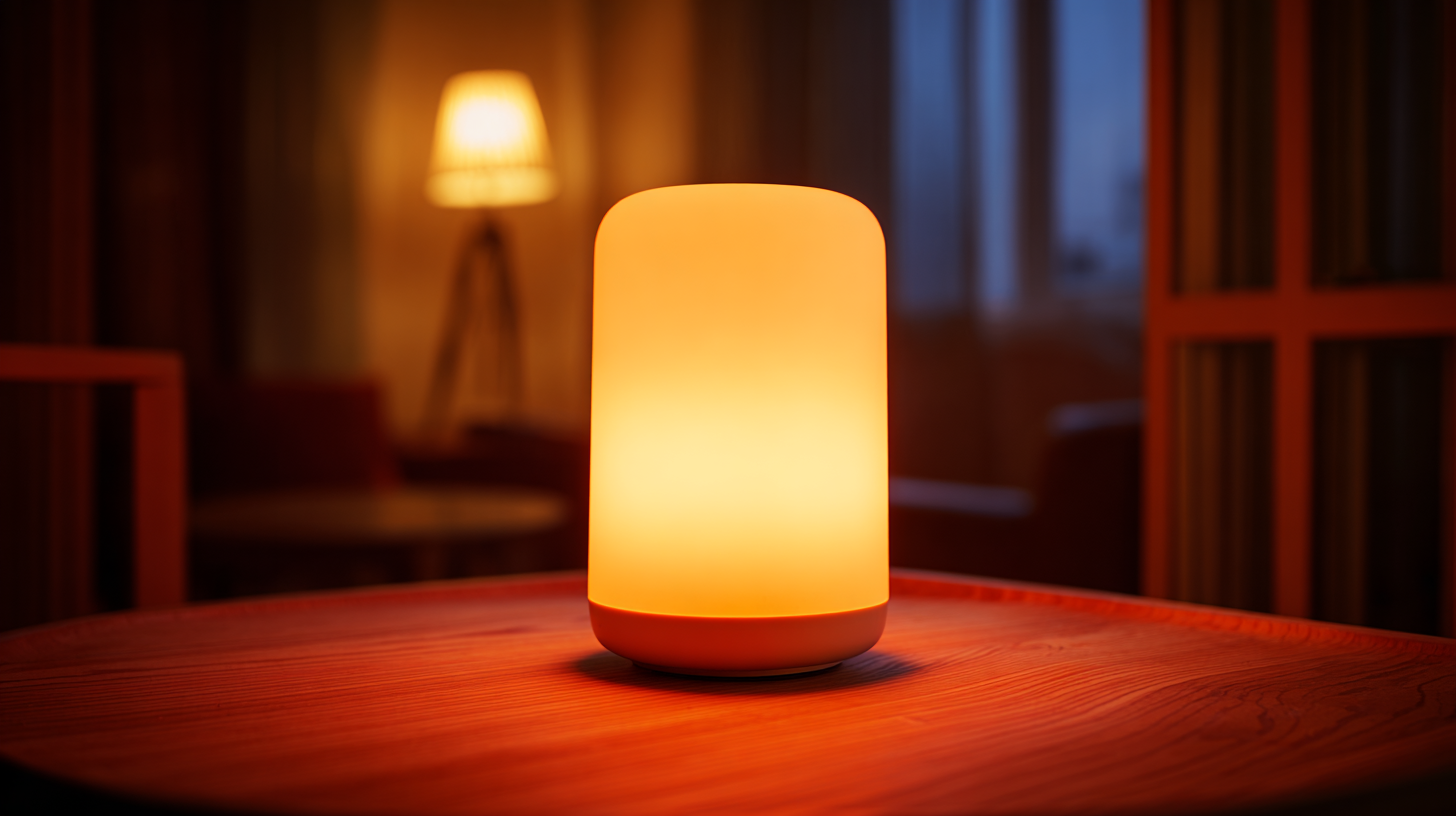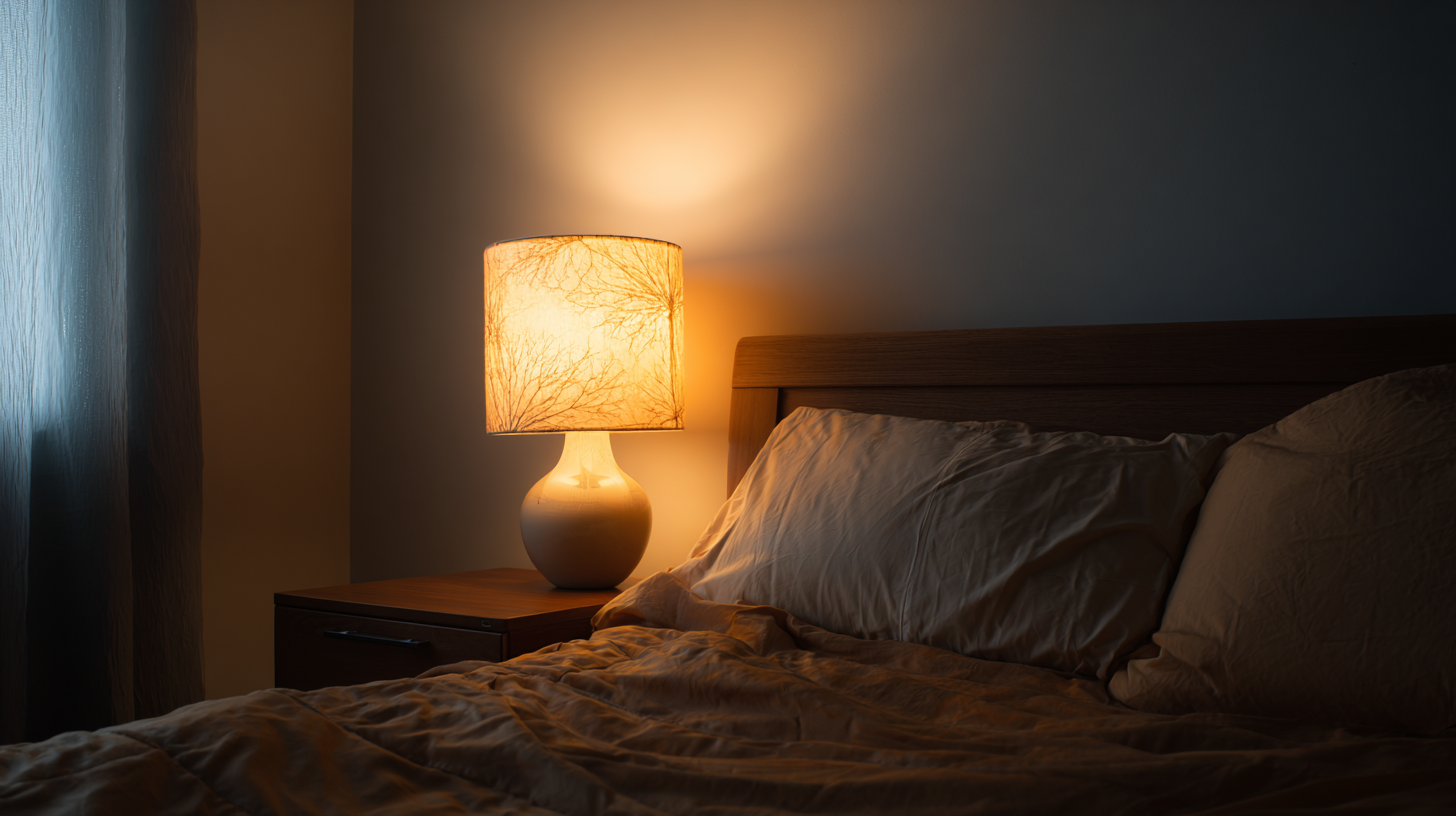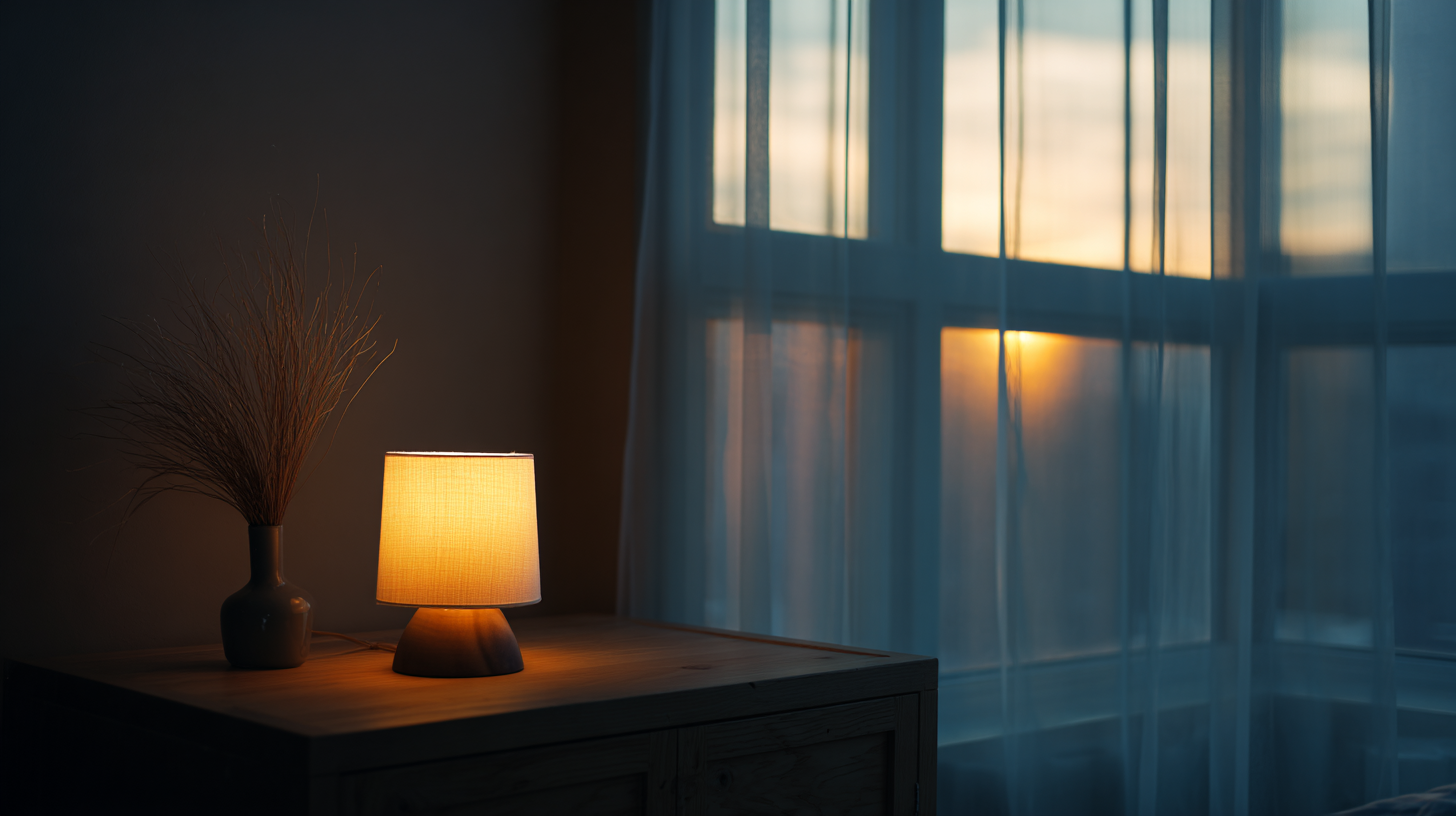Discover the Science Behind Warm Light Lamps: How Color Temperature Affects Your Mood and Sleep Quality
The interplay between light and human psychology is profound, influencing everything from mood to sleep quality. Recent studies indicate that the color temperature of light can significantly affect our circadian rhythms and overall well-being. Warm light lamps, with their cozy, amber hues, are particularly noteworthy; research by the Lighting Research Center found that exposure to warm light can enhance melatonin production, promoting better sleep patterns and improved mood. These findings are crucial as inadequate sleep is linked to a range of health issues, including anxiety and depression. Furthermore, the use of warm light in environments such as homes and offices can lead to increased productivity and happiness, as emphasized by a report from the International Journal of Environmental Research and Public Health. As we delve deeper into the science of warm light lamps, we uncover not just their aesthetic appeal but their essential role in fostering a healthier, more balanced lifestyle.

Understanding Color Temperature: The Basics of Warm Light Explained
Understanding color temperature is essential when exploring the impact of light on our daily lives. Color temperature, measured in Kelvin (K), refers to the warmth or coolness of light, influencing both our mood and sleep cycles. Warm light, typically ranging from 2700K to 3000K, emits a cozy, yellowish glow reminiscent of sunset or candlelight. This type of light is known to create a relaxing environment, promoting feelings of comfort and tranquility.
In contrast, cooler light, with a color temperature of 4000K or higher, resembles daylight and can invigorate and energize. This blue-hued light can enhance focus and productivity but may disrupt our circadian rhythms if used excessively in the evening. Understanding the science behind color temperature enables us to tailor our lighting environments to suit our needs, whether it's fostering relaxation in the evening or enhancing alertness during the day. By making mindful choices about the type of light we expose ourselves to, we can significantly improve both our mood and sleep quality.
Discover the Science Behind Warm Light Lamps
This chart illustrates how different color temperatures of warm light lamps (from 2000K to 5000K) can impact mood on a scale of 1 to 10. Generally, lower color temperatures are associated with a more positive mood, while higher temperatures tend to have a neutral or negative impact.
The Impact of Light Color on Mood: Exploring Emotional Responses
The relationship between light color and mood has been a topic of extensive research in the field of psychology and environmental science. According to a study published by the Illuminating Engineering Society, the color temperature of light can significantly influence emotional responses. Warm light, typically ranging from 2700K to 3000K, has been shown to create a cozy and relaxed atmosphere, positively impacting mood and promoting feelings of calmness. This is particularly beneficial in indoor settings, such as homes and offices, where warm lighting can help reduce stress and anxiety levels.
Moreover, studies indicate that exposure to warmer light enhances our ability to wind down and prepare for sleep. A report by the American Psychological Association highlights that the use of warm light during the evening can lead to improved sleep quality, allowing for deeper and more restorative sleep cycles. In contrast, cooler light, which falls between 4000K and 6500K, has been associated with higher alertness and productivity but may lead to increased levels of stress if used inappropriately during evening hours. Understanding these effects can empower individuals to make informed decisions about their lighting environments, ultimately fostering better emotional well-being and sleep hygiene.

Warm Light and Sleep Quality: How Light Influences Circadian Rhythms
The influence of light on our circadian rhythms is profound and scientifically documented. Circadian rhythms, which dictate our sleep-wake cycles, are strongly affected by the color temperature of light. Research from the National Institute of Health indicates that exposure to warmer light, generally in the range of 2700K to 3000K, enhances melatonin production in the evening, promoting better sleep quality. This is crucial, as melatonin signals to our body that it is time to wind down. In contrast, cooler light, often above 5000K, can suppress melatonin levels and lead to difficulties in falling asleep.
Additionally, a study published in the journal Sleep Medicine Reviews reveals that warm light can significantly lower activity levels in the brain at night, thereby facilitating a more restful state. Participants exposed to warm light in the evening reported an average improvement of 30% in sleep satisfaction compared to those exposed to harsh, cooler light. This demonstrates the importance of warm light lamps for anyone looking to enhance their sleep environment and overall well-being. Implementing warm light solutions could mitigate sleep disturbances and align bedtime routines with natural circadian patterns.
Discover the Science Behind Warm Light Lamps: How Color Temperature Affects Your Mood and Sleep Quality
| Aspect | Warm Light (2700K) | Cool Light (6500K) |
|---|---|---|
| Color Temperature | 2700 Kelvin | 6500 Kelvin |
| Effects on Mood | Promotes relaxation | Increases alertness |
| Impact on Sleep Quality | Improves sleep onset | May disrupt sleep |
| Circadian Rhythm Influence | Supports natural rhythms | Can alter natural rhythms |
| Recommended Usage | Evenings and bedtime | Mornings and daytime |
Choosing the Right Warm Light: Practical Tips for Home and Workspaces
Choosing the right warm light for your home and workspace can significantly impact your mood and sleep quality. Research indicates that the color temperature of light, measured in Kelvin (K), plays a crucial role in how we perceive light and its effects on our environment. For example, a warm light with a color temperature ranging from 2700K to 3000K is often recommended for residential spaces, as it closely mimics the natural light seen during sunset. According to the Lighting Research Center, exposure to warmer light during the evening hours can enhance relaxation and prepare the body for sleep by promoting the natural production of melatonin.

When setting up your workspace, consider using warm light during the early morning and late afternoon hours. A study by the International Journal of Environmental Research and Public Health found that exposure to warm-colored light during these times can boost productivity and improve overall well-being. Opting for smart bulbs that allow you to adjust brightness and color temperature can be an excellent choice—research suggests that environments with adjustable lighting lead to a 15% increase in focus and efficiency. By carefully selecting your lighting, you can create a harmonious atmosphere that fosters both comfort and productivity.
Scientific Studies on Light Color: Evidence Linking Warm Light to Wellbeing
Recent scientific studies have shed light on how the color temperature of artificial lighting can significantly influence our mood and sleep quality. Research published in the journal Sleep Medicine Reviews has shown that exposure to warm light, specifically in the range of 2700K to 3000K, promotes feelings of relaxation and has a calming effect on the mind. This is particularly important in the evening when our bodies naturally prepare for sleep. The warm hues help to lower cortisol levels and increase melatonin production, as evidenced by a study from Harvard University which found that warm light exposure in the evening improved sleep quality by 20% compared to cooler, blue-toned lighting.
Additionally, a report by the Lighting Research Center indicates that individuals exposed to warm light during nighttime hours reported lower levels of stress and anxiety, illustrating a clear connection between light color and overall wellbeing. This finding aligns with cognitive behavioral therapy approaches that utilize lighting as a tool to create soothing environments, particularly for individuals struggling with sleep disorders. By choosing warm light lamps for use in bedrooms and relaxation spaces, individuals can foster a more tranquil atmosphere conducive to better mood regulation and sleep quality.
Related Posts
-

Ultimate Checklist for Choosing the Best Sunshine Light for Your Home
-

How to Choose the Best Sun Light Solutions for Your Business
-

Choosing the Right Manufacturer for the Best Sunlight Light Products
-

How to Choose the Best Bright Light for Your Business Needs
-

How to Maximize Value with the Best Sunlight Lamp Through Effective After Sales Support and Low Repair Costs
-

House Light Showdown: Which Style Brightens Your Home Best?
